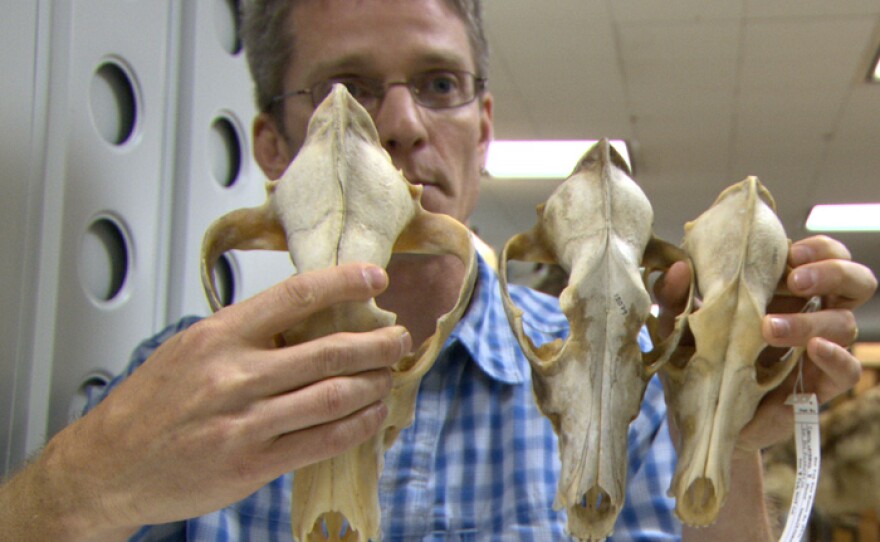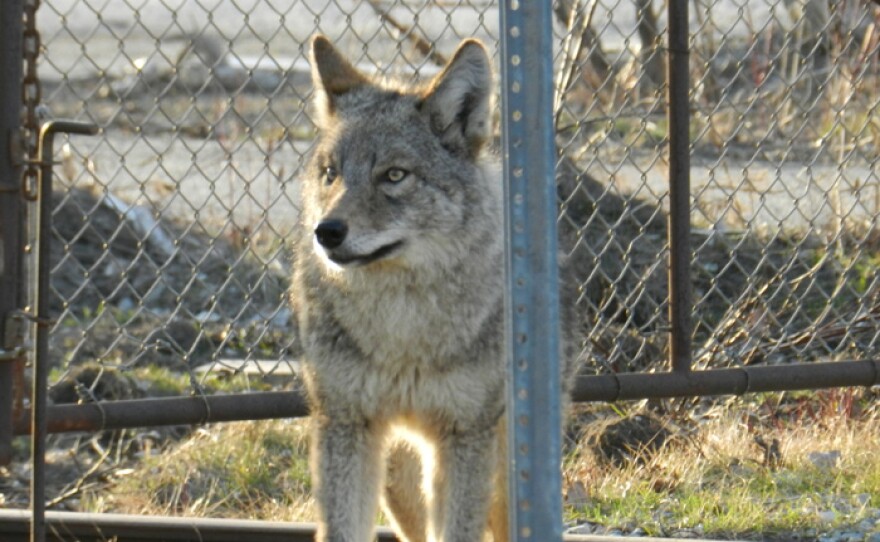There is a new hybrid species that has been spreading across North America at a startling pace and slipping unnoticed into cities such as Toronto, Montreal, Boston and even New York. It is called a coywolf, a mixture of western coyote and eastern wolf, whose first known birth occurred less than a century ago. Because these animals originated in the east, they are also known as eastern coyotes.







Scientists say it is one of the most adaptable mammals on the planet, but what surprises them most is how this wild carnivore manages to live right alongside us while remaining just out of view. Many of us now share our yards, parks and streets with these elusive new predators even though we may hardly ever get a glimpse of one. NATURE explores the origins of this hybrid animal and how it has adapted and evolved in "Meet The Coywolf."
To get an idea of a coywolf’s size, Roland Kays, curator of mammals at the New York State Museum in Albany, explains “it’s much larger than the western coyote, but still quite a bit smaller than the wolf .… One of my students likes to say it’s a coyote-like skull with wolf-like teeth.” Biologist John Pisapio at the Ontario Ministry of Natural Resources adds “They have long legs, they have thick fur, they look very wolf-like.”
To understand the origins of the coywolf, scientists say you have to go back to the impact of the settlers in the eastern part of North America who cut down the forests which had been home to the eastern wolf and deer. As the settlers experienced problems with their livestock, the wolf population was decimated which opened the region to the smaller western coyote. Over time, these coyotes made their way north to Ontario’s Algonquin Park, one of the last safe havens for the eastern wolf.
Elsewhere, wolves kill coyotes, but with their dwindling numbers, the eastern wolf became the genetic bridge between the two species with the birth of the coywolf around 1919. This surprising research by field biologist John Benson also revealed that coyotes and eastern wolves not only continue to mate, but he discovered that some coyotes, wolves and coywolves continue to live in packs and raise their young together in and around Algonquin Park.
So how are the coywolves making their way from the Northern Ontario wilderness to our cities? John Pisapio says his GPS tracking data shows they use railway tracks. “When those tracks intersect a park or a ravine or a gold course,” Pisapio says, “that then provides a new opportunity for territory and residing in the urban landscape as opposed to just moving through. Most wildlife doesn’t do well in the presence of people, in the presence of development, but here we have one that is not only persisting, but thriving.”
Raccoons, squirrels, rabbits, rats, mice, waterfowl and even handouts from humans provide ample food for these intelligent predators.
Like the coywolf, its ancestor, the original coyote, has moved into cities like Chicago. Biologist Stan Gehrt and his team from Ohio State have been tracking radio-collared coyotes from its downtown core to the suburbs for over 12 years. They’ve learned that coyotes go to great lengths to keep their dens secret, to protect their young; that they have evolved to be larger than their ancestors; and some are living up to four times longer than coyotes in rural areas.
And what about New York City? Wildlife biologists Mark Weckel and Chris Nagy are trying to determine whether the coywolf is just passing through or settling down in the big city. They set up camera traps in various wooded park areas to capture images of these adaptive animals. There have been sightings in Queens and the Bronx and one captured in Central Park in 1999 resides at the Queens Zoo, but Weckel and Nagy say only time will tell where else in the city the coywolf will call home.
WATCH ON YOUR SCHEDULE:
The full episode is available to view on demand with KPBS Passport, video streaming for members ($60 yearly) using your computer, smartphone or tablet. We offer Passport videos on ROKU! Activate your benefit now.
CONNECT:
NATURE is on Facebook, Tumblr and you can follow @PBSNature on Twitter.
CREDITS:
NATURE is a production of THIRTEEN in association with WNET for PBS. For NATURE, Fred Kaufman is executive producer. "Meet The Coywolf" is a production of Coy Wolf Inc. in association with THIRTEEN Productions LLC for WNET.





